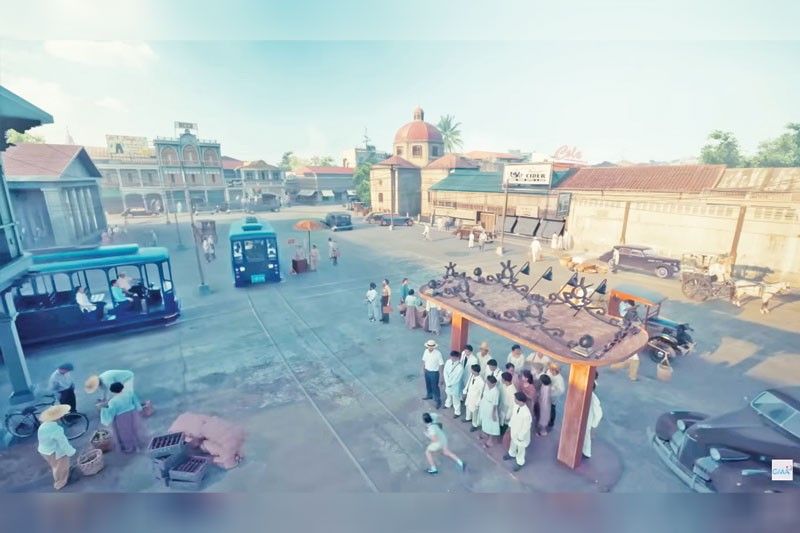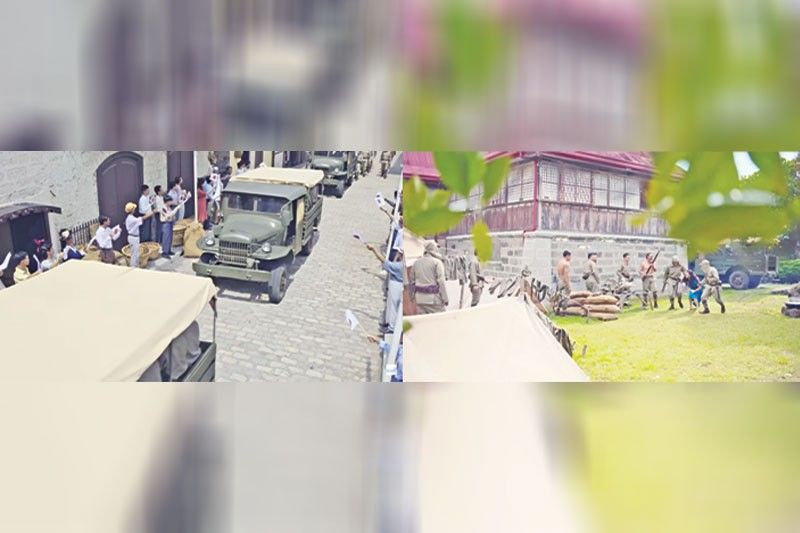How ‘Pulang Araw’ takes us back to an important time in history

MANILA, Philippines — Historical accuracy is key in a period drama. The people behind the first Netflix-GMA collaboration, “Pulang Araw,” detailed the challenges of building the world for what has been touted as the “most important series of 2024,” which is set to transport us back in time, particularly during the World War II years.
Directed by Dominic Zapata and written by Suzette Doctolero, “Pulang Araw” chronicles the intertwining lives of Adelina (Barbie Forteza), Teresita (Sanya Lopez), Hiroshi (David Licauco), and Eduardo (Alden Richards) during the Japanese occupation of the Philippines. Their characters get caught up in a complex web of loyalty, betrayals and sacrifices against the backdrop of a war ravaging the country. It will premiere first on Netflix on July 26, 72 hours before its airing on free TV.
The Kapuso network is no stranger to historical dramas, from “Amaya,” “Ilustrado” to the recent megahit “Maria Clara at Ibarra,” which also became one of the most-watched titles on Netflix Philippines. And this type of show is always “expensive” in terms of production cost, confirmed GMA vice president for Drama Cheryl Ching-Sy, and “Pulang Araw” is no different.
“The production cost is comparable to GMA's previous period dramas, considering factors such as location shoots, costumes, set construction, special effects and talents. While detailed budget allocations and the scale of production elements may vary, the overall investment aligns with the high standards GMA sets for all of its projects,” she told The STAR in an exclusive interview.

Setting the stage for ‘Pulang Araw’
One of the biggest challenges of mounting “Pulang Araw” was finding the 1940s-appropriate sets.
“The main challenges were the scarcity of period-appropriate locations and the fact that some suitable sites were not open to taping,” Ching-Sy said.
The production, nevertheless, managed to identify multiple locations for its storytelling. “The production team traveled across the country to find the perfect locations to recreate the 1940s era,” she said.
“Tapings took place in Quezon (Sariaya, Lucban), Batangas (Taal, Lipa), Manila (Intramuros, Escolta), Laguna (Los Banos), Bulacan (Calumpit), and Pampanga (Apalit, Mexico), among others. We are still taping as the program airs, so the next locations are yet to be determined,” she further told this paper.
While they filmed on-location at historical spots that still exist today, others had to be reimagined with the help of visual effects. Doing the CGI work for the first three weeks were the in-house team and an outside supplier, with GMA post-production fully taking charge from Week 4 onwards.
“If the actual locations where the historical incidents or events occurred still exist, such as UP Los Banos and Fort Santiago, we tape at those sites. If the locations no longer exist, we find places that closely resemble the original based on our research and consultations with historians,” Ching-Sy said.
“When neither option is available, we construct our own sets and use detailed video graphics to recreate the locations as accurately as possible.”

Achieving historical authenticity
Attention to detail is one of the things worth noting about the project.
In a separate interview, Zapata said that while he has directed period works such as “Zorro” in 2009, those dramas weren't location-specific unlike “Pulang Araw.”
The director cited as an example how they incorporated details in recreating Plaza Sta. Cruz.
As shown in a teaser trailer, “binuo namin for example yung Plaza Sta Cruz, hindi naka-indicate dun, but Plaza Sta. Cruz… then Sta. Cruz Church … that is practically true to state. If you see the details of the building, tama yun,” he said.
“Meron duon sa Rivoli Theater, na naging Tivoli Theater siya by mid-30s, was an establishment. If you look at the details… katabi dun is a small store that says Joe Bush. Gumagawa sila tailoring and dye. Yung dye na yun, ito yung tinatawag now na Dyobus. It used to be Joe Bush. So it's things like that.”
And what contributed immensely to the world-building are “actual references ng mga lugar na yun,” according to Zapata. “There's historical footage to match that. Ano yung mga sinira nung panahon na ‘ito. At some point, when we reach Week 4 or Week 5 (of the show), up to the hour, up to the minute, kung ano ang binomba (whatever structures were destroyed), whatever happened in Manila, in Clark, in Davao, naka ora-orada na yun, so kailangan bantay kami,” Zapata said.
“Tinitingnan ko pa kung anong oras sumikat yung araw sa Davao, in 1941, Dec. 8. So nung dumating ang mga airplane, ano itsura ng langit? That's how specific we got.”
All these for the goal of historical accuracy in “Pulang Araw.” “Historical accuracy plays a crucial role in period dramas like ‘Pulang Araw,’” said Ching-Sy. “It forms the foundation of the story, providing authenticity and immersion for the audience. We achieve historical accuracy through meticulous research, consulting with historians, and verifying details from multiple sources.”
While historical accuracy is important, in the hierarchy of things, story is still king, said the TV executive.
“It is balanced with the needs of the story, which is fictional,” said Ching-Sy.
“The narrative and character development are paramount, as they drive engagement and foster an emotional connection with the audience. Casting is also vital, as actors bring the characters to life and create a strong bond with viewers. Ultimately, the story is still king,” she added.
Honoring WWII heroes
Given the efforts and resources that GMA and the production team had to pour into telling the story of “Pulang Araw,” Zapata also made it clear that “hindi pa para ipagyabang ko pa na wow nahirapan (kami)” since for him, it was nothing compared to what Filipinos suffered and endured during wartime.
“So parang in passing lang ginagawa natin ‘to. If there's an opportunity for us na mahirapan, then let's embrace it because it will make us feel less guilty for living at a time na maginhawang maginhawa yung buhay natin.
“Na nung nagkabunutan, nilagay ka ni Lord sa 2024 at hindi sa 1940s kasi napakahirap… So the least we can do, ‘Nauna ka bang binunot kay sa akin? Sige, i-ho-honor ko kayo.’”
For Zapata, more than the production value, it's the message and intention that weigh more heavily — to honor the memory of the heroes of that very important time in Philippine history.
“It’s been said — I think it was Ernest Hemingway who's been credited with saying this — that a man lives and dies twice, that there are two deaths. The first death is when your heart stops beating. The second time you die is when your name is spoken for the last time. When no one remembers you, that's when you infinitely die,” he reflected.
Zapata added that while they won't be able to name every hero who sacrificed their lives during World War II in this series, one thing he hopes they will accomplish is that “even though we may forget their names, we don't want to forget their stories because there's so much to learn from those heroes.”
- Latest
- Trending


























 Exclusive
Exclusive






